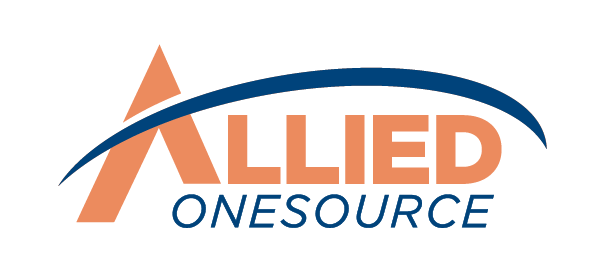Succession Planning for the Modern Workforce: Why Your Future Leaders Are at Risk
When your VP of Operations suddenly announces they're leaving for a competitor, you face an immediate crisis. Critical client relationships, operational processes, and years of institutional knowledge leave with them. Depending on the role's complexity, it can take up to 1-2 years for a new hire to fully learn and excel in that position.¹ This means months of disrupted operations while you search for and train a replacement.
Many leaders assume they'll have time to plan when someone gives notice. However, leadership departures rarely follow convenient timelines. Retirements, resignations, health issues, or better opportunities happen without warning. The question isn't whether you'll face leadership gaps, it's whether you'll be ready when they occur.
The Real Cost of Leadership Gaps
Understanding replacement timelines is just the beginning. The real damage from leadership gaps extends far beyond posting job listings and conducting interviews. Here's what actually happens when key leaders leave without proper succession planning in place.
Decision-Making Paralysis
Projects stop when no one has clear authority to approve budgets, sign contracts, or make strategic decisions. Teams wait for direction that never comes while deadlines pass, and opportunities disappear. Without decision-making power, routine operations become complex negotiations about who can authorize what action.
Team Uncertainty and Productivity Loss
Employees don't know who to report to, which priorities matter most, or how their work fits the bigger picture. This confusion leads to duplicated efforts, missed deadlines, and costly mistakes as people make assumptions about what needs completion. Team members spend more time seeking clarification than working, and output quality suffers when no one feels confident about their direction.
Read More: Hiring for the Future: How AI and Predictive Analytics Are Changing Workforce Planning
Knowledge Transfer Failure
Years of institutional knowledge disappear when key leaders leave without proper documentation or transition planning. Critical processes that existed only in someone's memory suddenly become mysteries. Client preferences, vendor relationships, and operational shortcuts that took years to develop are lost forever. Organizations must rebuild this knowledge from scratch while making expensive mistakes along the way.
Client Confidence and Market Vulnerability
Clients notice when their primary contact disappears, and no one can answer their questions or maintain service levels. This uncertainty damages relationships built over years and opens doors for competitors to offer promises of stability. Market perception shifts when leadership changes signal internal problems, affecting everything from client retention to your ability to attract top talent.
Financial Impact: Hiring Costs and Revenue Loss
Replacing a mid-level manager costs up to 150 percent of their annual salary.² This figure includes recruitment fees, interviewing time, onboarding expenses, and productivity loss during the learning period. Meanwhile, delayed decisions and operational disruptions directly impact your bottom line through missed sales opportunities, project overruns, and resources diverted from revenue-generating activities to crisis management.
The Employee Engagement Challenge
Leadership gaps signal instability to remaining employees, who start questioning their job security and career prospects. High performers begin updating resumes and exploring other opportunities, creating a chain reaction of resignations. Each departure increases workloads for remaining staff and further damages morale until you're managing multiple crises instead of filling one position.
However, a structured succession planning process addresses these issues before they occur.
Read More: Breaking the Productivity Plateau: How to Keep High Performers Engaged
Building Your Succession Planning Process
Here's how to build a process that actually works when you need it most.
Step 1: Identify Critical Roles and Vulnerabilities
Start by mapping key positions where sudden departures would cause the most damage. Look beyond the C-suite to include department heads, client relationship managers, and technical specialists who hold unique knowledge. Assess each role's business impact by asking what would happen if that person left tomorrow.
Consider which projects would stall, which clients would be at risk, and which processes would break down. Create a priority list that ranks these positions based on their potential to disrupt operations. This exercise reveals where your organization is most vulnerable and helps focus your succession planning efforts where they matter most.
For example, a regional sales director who manages 60 percent of your client relationships represents higher risk than a department head with well-documented processes and cross-trained team members.
Step 2: Assess Your Current Talent Pipeline
Once you've identified vulnerable positions, evaluate internal talent available to fill them. Look for high-potential employees who demonstrate leadership qualities, technical competence, and cultural fit for advancement. Review performance evaluations, seek input from current managers, and observe who steps up during challenging situations.
Map out skill gaps between potential successors and the requirements of crucial roles. This assessment shows which positions have ready candidates and which require extensive development planning. Document each candidate's current capabilities, areas for growth, and estimated timeline to readiness.
Step 3: Create Development Pathways
Design targeted leadership development programs that prepare identified candidates for advancement. Establish mentoring relationships between current leaders and potential successors, ensuring knowledge transfer happens gradually rather than during crisis mode.
Implement cross-training initiatives that expose high-potential employees to different business aspects and leadership challenges. Create stretch assignments that allow candidates to demonstrate capabilities in low-risk situations. Your development plan should include specific milestones, timelines, and competency benchmarks that track each candidate's progress toward promotion readiness.
Allied OneSource has seen organizations reduce leadership transition time by 40 percent when they implement structured development pathways compared to ad-hoc promotion decisions.
Step 4: Establish Knowledge Transfer Systems
Document critical processes, relationships, and institutional knowledge that currently exist only in key leaders' minds. Create standardized procedures for client management, vendor relationships, and operational workflows that any qualified successor could follow.
Establish regular knowledge-sharing sessions where experienced leaders formally transfer expertise to developing candidates. Implement systems that capture decision-making frameworks, strategic thinking processes, and industry insights that make current leaders effective. These systems ensure business continuity regardless of when transitions occur.
Step 5: Test and Maintain Your Plan
Your succession plan becomes worthless if it sits unused. Conduct regular succession readiness reviews that assess whether identified candidates are progressing as expected and whether your critical roles list remains accurate. Run scenario planning exercises that simulate sudden departures and test your organization's ability to execute transitions smoothly.
Update your plan annually to reflect business changes, new hires, and shifting priorities. Research shows that about 70 percent of succession plans fail within two years due to lack of commitment and support from senior leaders.³ Make succession planning a standing agenda item for leadership team meetings to ensure it receives continuous attention.
Ready to see how succession planning fits into your broader workforce strategy? Our whitepaper on Strategic Workforce Optimizationshows you the complete framework.
Don't Let Leadership Gaps Define Your Future
The difference between companies that thrive during leadership transitions and those that struggle comes down to preparation. Effective succession planning isn't just about having names on a chart. It's about building a resilient organization where talent development aligns with strategic goals and workforce planning becomes a competitive advantage.
Your talent pool already contains future leaders. Without a structured approach to identifying and developing them, you're leaving growth and stability to chance. The VP of Operations scenario from our opening doesn't have to end in panic. With proper succession planning, that departure becomes a smooth transition that demonstrates your organization's strength rather than exposing its weaknesses.
At Allied OneSource, we help organizations across industries build succession planning processes that protect against leadership gaps while accelerating business growth. Our team understands that every company's needs are unique, and we work with you to create sustainable talent management strategies that fit your culture and objectives.
The question isn't whether your key leaders will eventually leave, it's whether you'll be ready to maintain momentum when they do.
Ready to transform your approach to succession planning? Contact us to learn how we can help you build the leadership pipeline your business needs to thrive, regardless of what transitions come your way.
References
1., 3. Dennison, Kara. "The Importance of Succession Planning, Now More Than Ever." Forbes, 25 June 2024, https://www.forbes.com/sites/karadennison/2024/06/25/the-importance-of-succession-planning-now-more-than-ever/.
2. How Strong Leadership Fuels Business Growth." LinkedIn, 1 Apr. 2025, https://www.linkedin.com/pulse/how-strong-leadership-fuels-business-growth-teamradixhr-bktic/.











